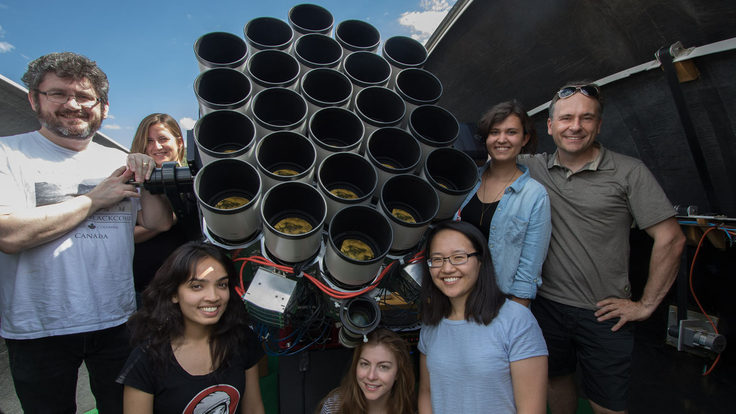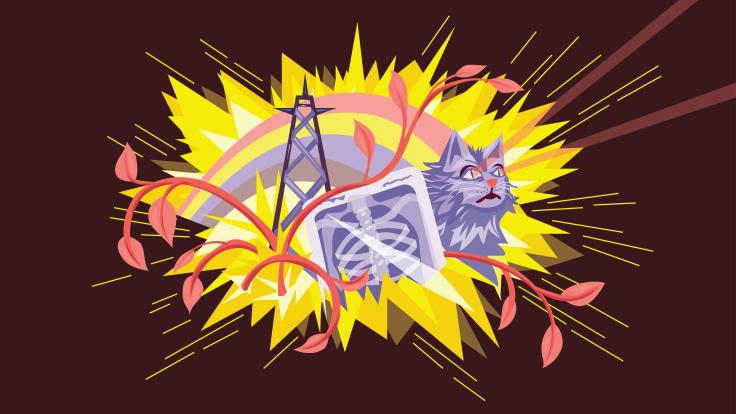The CDF collaboration at Fermilab got a glimpse recently of a rare decay process that scientists have searched for years. Its rate appears to be slightly larger than expected, which could indicate new physics.
The collaboration’s most recent result involves the observation of a rare decay of a Bs meson into a pair of muons. The 2.8 sigma result, which is just below the evidence threshold, is the first time scientists have seen signs of this legendary decay. CDF co-spokesperson Giovanni Punzi explained that this result is also significant because the collaboration observed more of the rare events than they expected.
When most particles decay, they frequently do so in a specific way. However, once in a while, particles can decay in an unusual way. It is in these rare instances that scientists can catch a glimpse of something that they normally wouldn’t otherwise see.
The Standard Model predicts that this decay should take place so infrequently (3.2 x 10-9), that it should take more than 350 trillion collisions before scientists have an opportunity to see it. However, with that many collisions, also quantified as 7 inverse femtobarns of data, CDF saw a handful of these events.
“Observing this many of those rare decays is comparable to an individual winning the lottery if everyone in the U.S. played,” said Rob Roser, CDF co-spokesperson.
Establishing a higher rate for this decay would be a clear sign of the influence of a new heavy particle. If such a particle exists, it could act as a facilitator of these rare decays, making them happen more frequently.
To constrain the possible scenarios for new physics, scientists set upper limits on how many decays they should see. They exclude many new physics models just because they predict way more decays than they observe.
Previously, both CDF and DZero have searched for this decay. In 2009, CDF capped the number of these rare Bs decays at 43 out of a billion. With the newest result, CDF has further reduced that upper limit to 39 decays per billion and has set for the first time a lower limit of more than 4.6 Bs meson decays per billion.
The result sits on the outskirts of the 3.2 Bs decays per billion predicted by the Standard Model. There is only a 2 percent probability that the Standard Model could produce the observed number of events.
“If this is not a fluctuation, it means there is something out there to discover,” Punzi said. “Right now, it means that we have further narrowed down the possible models of new physics.”
CDF hopes to get a clearer look at these rare decay events again in a few months, once their detector has recorded more than 10 inverse femtobarns of data. In the meantime, LHCb, one of the experiments at the LHC that focuses on B physics, expects to see this decay as well.
This result is one of a string of new results to come out of the collider experiments at the Tevatron in recent weeks. The increased frequency of these results is due to the accumulated dataset of 7 inverse femtobarns. The larger data set increases the experiment’s chances of seeing something interesting.
“We work for a long time to build up the data set necessary to look for these phenomena,” Roser said.
Both Roser and Punzi expect that being in that sweet spot will help the experiments yield important results in the coming years as they continue to analyze recorded data.
“There’s a natural threshold for being sensitive to certain physics phenomena” Punzi explained. “We’re crossing that threshold into the area where interesting things happen.”






